I was glad I had bought a ticket for an air-conditioned wagon this time. We sped south towards Samarqand. One of the cities I wanted to visit, due to all of its beautiful buildings, old mosques, and, surprisingly, an old observatory.
We all have prejudices. The question is more, do we admit them? I freely admit mine. Because I think it is important in order to learn new things and remove misconceptions.
When going to the 'stans, one thing I did not expect, was a high speed train. But there it was. Between Tashkent and Samarkand, I could choose between pretty fast, and the bullet train. The bullet train was obviously very popular. Even several days ahead, I could only get economy. So on the train from Tashkent to Samarkand, I could only get the "quite fast" train.
Now the three previous trains, I had gone with the second class ticket. Bunk-beds to sit on. Aircon was basically open windows where the air from outside (hopefully) flowed through the car when the train was moving. In one part of the car, it was livable, in the other, it was living hell. So hot my shirt was dripping with sweat. After enduring this for the last three train rides, I decided it would be ok with riding a better train. And even in VIP class. After three rides in what can only be described as zoo class. It was only 30 dollars anyway, so there was nothing stopping me.
I enjoyed the relative comfort of the cool cabin. A definitely welcomed break from the baking oven I had travelled in so far. The landscape shifted into a more dry area. And after way shorter than expected time, we arrived. The first thing I did, was to book a ticket on the bullet train back to Tashkent. Finally, I would be able to try this thing I didn't quite believe existed here.
 |
| Beautiful mosaics inside the train station in Samarqand |
I took a taxi to my hotel, since it was quite a distance from the station. It was located in a quiet neighborhood. And they had a nice patio where one could sit and enjoy the cool evenings.
Samarquand is an old city. It was founded 700 BC. And is one of the oldest continuously inhabited cities in the world. It was also one of the main cities on the silk route.
As always, what I wanted to see, were the old mosques, madrasas, mausoleums and last but not least, the old observatory of Ulugh Beg. One of the great astronomers of the 14th century. Alongside Brahe and Halley, he created catalogues of meticulously measured positions of stars.
First, I went to the old madras, or school. It was a monument to the greatness this city once enjoyed. From some old photos, it had fallen into disrepair over the years. And probably used as source for building materials... But they had taken on the task of reviving it to its former glory. The pictures probably speaks for themselves.
 |
| Astronomers of the ancient times |
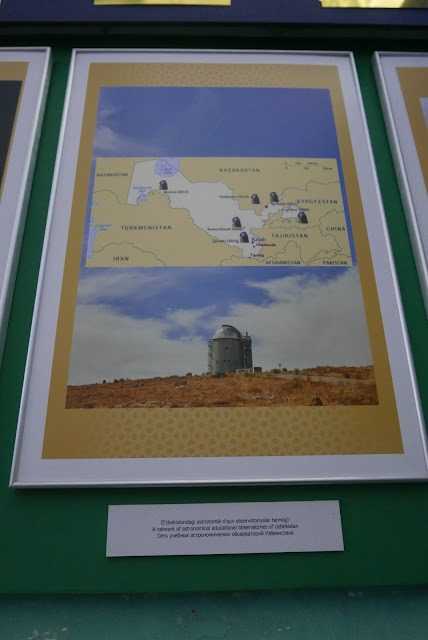 |
| Modern day observatories in Uzbekistan |
 |
| Wolverine chillin on a carpet... |
I also went to the Shah-i-Zinda mausoleum. The name means "The living king". It is the final resting place of several kings and other dignitaries. Again, a stunningly beautiful place. Well worth visiting. My photos do not do it any justice.
 |
| List of who is buried in the different coffins on the floor |
Then I walked up to the observatory. It was a nice day, and I felt like walking. Well, frankly, I always like walking. But anyways, it was a nice walk up the hill. Some of you might expect a dome and a telescope there, since it is an "observatory". But you have to remember, this was centuries before the telescope was even invented. So what did the astronomers observe at this time? They meticulously measured the position of the stars. Of immense importance to navigators on the sea. All over the world, astronomers built large instruments and accurate clocks to measure the positions as precise as possible. In Europe and here, in Samarqand. The larger the instrument, the more accurate the measurement. The way they took one measurement, was to find the exact time a star passed the meridian (a virtual line going north-to-south), and the height above the horizon it was at the time. When they had measured this for hundreds of stars, they could create a star map with the relative positions of all the stars. And by comparing their measurements with other astronomers, they slowly arrived at more and more accurate star maps. Or catalogs of stars. These were then published and used by navigators on ships travelling or the large oceans. To keep track of where they were. At a time when a clock and a sextant was all they had. And not knowing where you were could land you. Literally. Hard. On ship-crushing rocks.
 |
 |
| The observatory instrument. For observing positions of stars |
 |
| The astronomer himself |
I also walked past some statues and buildings during my walk through the city.
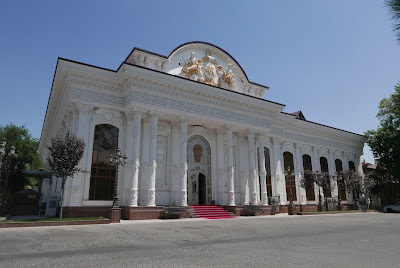 |
| Large building right beside my hotel |
 |
| In a nice park a short walk from my hotel |
 |
| Murial on a building near the madras |
 |
| Orthodox church |
 |
| The sign said "no photos", but I am a stupid tourist |
After a full day of walking, it was good to relax in my hotel. And the next day, I would ride the bullet. Train.
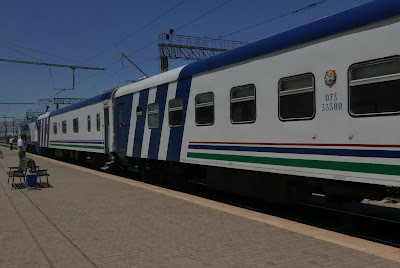
















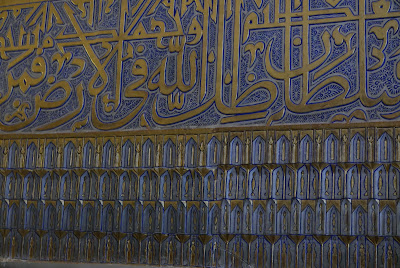







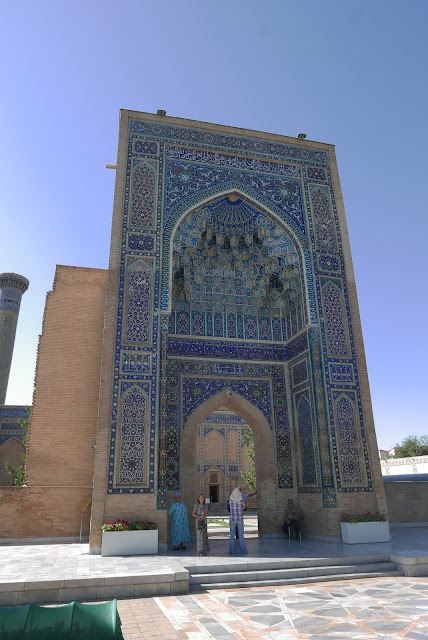



Ingen kommentarer:
Legg inn en kommentar